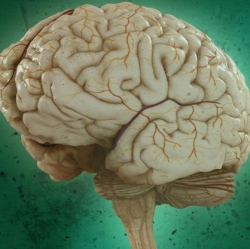
IBM’s Dharmendra Modha recently discussed the progress his team is making with TrueNorth neuromorphic architecture and how the project may proceed over the coming years. He was also willing to make some very amitious predictions.
Modha is IBM’s Chief Scientist for Brain-inspired Computing. He is a Cognitive Computing pioneer who envisioned and now leads a highly successful effort to develop Brain-inspired Computers. The project has received ~$58 million in research funding from DARPA (under SyNAPSE Program), US Department of Defense, and US Department of Energy.
The resulting architecture, technology, and ecosystem breaks path with the prevailing von Neumann architecture (circa 1946) and constitutes a foundation for energy-efficient, scalable neuromorphic systems.
According to Modha IBM has developed end-to-end technology and ecosystem to create and program energy-efficient, brain-inspired machines that mimic the brain’s abilities for perception, action, and cognition.
"Not only do we have chip," says Modha, "but we have an end-to-end programming paradigm from user interface deep learning down to a programming language for firmware, as well as the whole user flow and debugging tools."
"On top of that, we have created various boards and we are making plans by December of next year [2017], to create a hundred and twenty-eight chip system," Modha continues.
IBM’s research team project that TrueNorth’s modular, scalable architecture and ultra-low power consumption provide an unique opportunity to create brain-inspired information technology systems with 100 trillion synapses, which is comparable to “human-scale.”
"We conceive that such systems would constitute 96 racks, each rack with 4,096 TrueNorth processors and consuming merely 4kW. The key is to leverage TrueNorth’s seamless tiling for low-power local-connectivity along with recent advances in interconnect technology for long-range connectivity," they wrote in a recent paper.
Modha concludes his talk stating, "The ultimate vision, which I believe will be possible before 2020 ends is that we will be able to produce a brain-in-a-box which was the original vision of the SyNAPSE project. Ten billion neurons in two liters, one kilowatt. This is no longer science fiction, it is happening."
The full potential of a the neuromorphic computer ecosystems, like those based on TrueNorth will potentially impact areas including machine learning, neural network research, computer vision and voice recognition, neuroscience, robotics, computer architecture, circuit design, simulation methodology, programming languages, visualization, usability, design, supercomputing and more.
It is not entirely clear what he means by his ambition to create a ‘brain in a box’ by the end of 2020. Its worth noting that even technologists such as Ray Kurzweil who are known for their ambitions predictions for the future of technology do not expect human-like intelligence in computers for at least 15 years.
